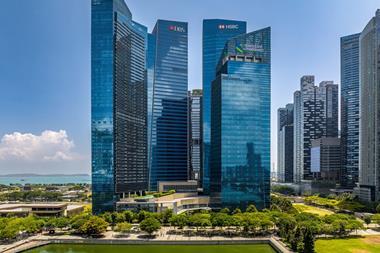With US president-elect Donald Trump expected to prioritise infrastructure development in the first 100 days of his administration, Australia’s cash-rich superannuation funds are poised to take pole position in the market.
Industry experts at the recent Superannuation Opportunity conference in Canberra discussed what role Australia’s expertise and capital might play in the anticipated national-infrastructure rebuilding programme in the US.
Trump pledged late in his campaign to invest $1trn (€912bn) in infrastructure improvements over 10 years, with tax credits offered to private companies to finance projects.
Peter Collins, chair of the Industry Super Association, which hosted the conference, said: “The US is at the doorstep of a new era – the Australian super industry is well placed to capture investment opportunities [there].”
Collins said he had led Australian industry super funds on several trips to the US over the past year.
He said Australian super funds had held talks with the governors of various US states – including Virginia, Idaho, Delaware and Indiana – on infrastructure development and funding.
“We have put a lot of time into building relationships [with these US states],” he said.
James Carouso, US charge d’affaires and acting ambassador, said the governor of Virginia, Terry McAuliffe, was now in Australia for talks with Mike Baird, premier of NSW, which is itself implementing a multi-billion asset-recycling programme to fund several large infrastructure projects.
Carouso said the US secretary of transportation, Anthony Foxx, had also recently visited Australia to find out more about the country’s approach to infrastructure development.
Given the close relationship between the two nations, Carouso said, Australia would be an “ideal partner” for US infrastructure development.
Quoting sources close to the incoming Trump administration, Carouso said the 50-100 major projects kicking off the infrastructure-redevelopment programme were likely to be identified in the near future.
He described US banks as still being “gun-shy” following the global financial crisis and that the US government would be looking for long-term “patient” money, prepared to invest for 20-30 years to boost its own budget spend.
Carouso cited the AUD7.5bn (€5.2bn) purchase by IFM Investors of the Indiana Toll Road last year as an example of the capacity of Australian super capital for long-term investment.
Collins pointed out that US vice-president elect Mike Pence had been governor of Indiana when Melbourne-based IFM purchased the Indiana Toll Road.
Brett Himbury, IFM chief executive, later told IPE Real Estate Pence had praised IFM for honouring its commitment to invest in the toll road; IFM spent $200m (€188m) to build a number of rest-stops along the road.
Australia’s super-fund sector leads the world in its investment in infrastructure, allocating, on average, 12% of funds under management to the asset class, Collins said.









